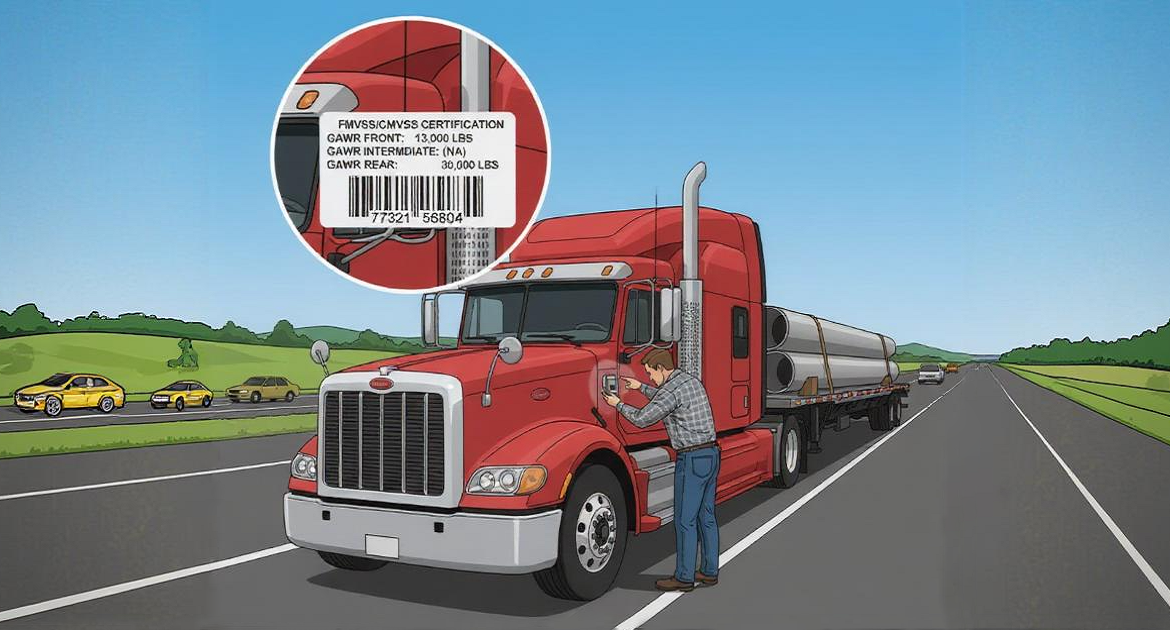When hauling oversize or overweight loads, a valid permit is essential—but it is not sufficient on its own. Permit holders must also comply with the vehicle’s rated capacities and state-imposed axle‑group limits. Ignoring these constraints can lead to enforcement actions, fines, or out-of-service orders.
1. Permits and Component Ratings: Knowing Where to Find GAWR & GVWR
Permits authorize access to roads beyond standard weight limits, but they do not override the manufacturer’s limits—such as GAWR, GVWR, or tire load ratings.
GAWR and GVWR are typically listed on a metal or sticker label—the vehicle certification label—located on the driver-side door jamb or door frame of the truck or tractor.

That label, installed by the manufacturer, will display:
The GVWR (the maximum allowable total weight of the vehicle including payload
The GAWR Front and GAWR Rear (maximum load each axle can carry)
Tire and rim size, and recommended tire pressure
If that label is missing or unreadable, the manufacturer’s manual or specification sheet can be referenced. Trailers carry their own labeling—typically found on the front left side of the trailer frame—showing the trailer’s GVWR, individual axle GAWRs, and tire load data.
When a permit’s allowed weight exceeds the GAWR or GVWR listed on these labels, the lower equipment rating becomes the binding limit. Operating above that threshold—even with a permit—may constitute a violation.
2. State Axle‑Group Weight Caps Remain Binding
Permits do not nullify statutory axle‑group weight caps, which vary by state and by group type (single, tandem, tridem, quad, etc.). Dispatchers and carriers must ensure that each axle group remains within those state limits.
For example, Texas often uses approximate caps such as:
Single axles: 25,000 lb
Tandem groups: 46,000 lb
Tridem groups: 60,000 lb
Quad groups: 70,000 lb
These caps—along with tire ratings and equipment limits—must all be considered before committing to a permitted load.
3. Verification: Use the Estimator Tool & Cross‑Check Limits
Before dispatch, permit planners should reference the Estimator Tool (https://permits.synchrontms.
The tool also provides other information such as processing time of the permits, cost estimates, escort requirements, etc..(Guidance on using the tool is available here: How to Use the Estimator Tool.)
4. Best Practices Summary for Carriers, Drivers and Dispatch Teams
Always confirm GAWR, GVWR, and tire load ratings from the certification label or spec sheet.
Check state axle-group limits applicable to the route.
Use the Estimator Tool to preview permit limits, constraints, and route factors.
Load according to the lowest applicable weight limit (equipment, or state cap).
Why Choose Synchron Permits?
Synchron Permits delivers more than just permit issuance: the service includes advanced route planning, weight-limit analysis, restriction alerts, and permit correction when misalignments arise.





